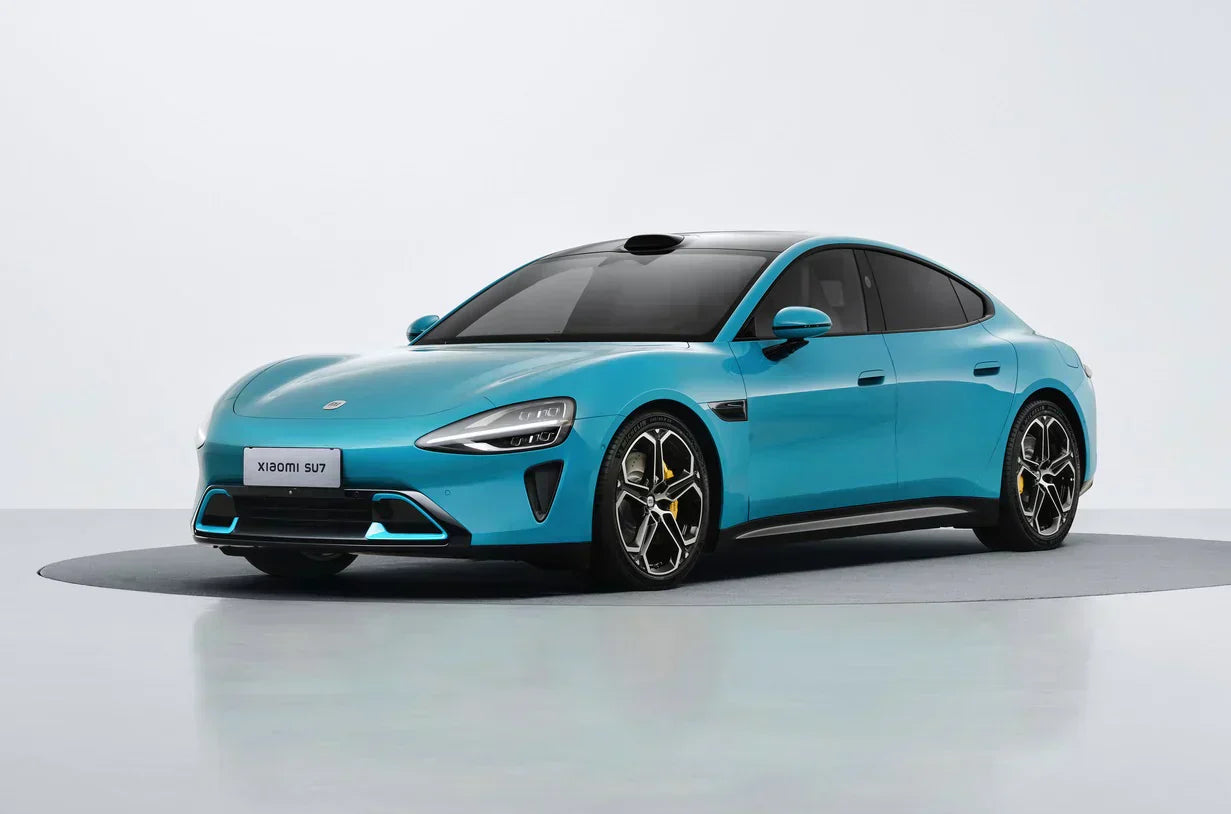Tests in der Praxis zeigen eine bescheidene Reichweite auf der Autobahn
Xiaomis Flaggschiff unter den Elektro-SUVs, der YU7 Max , wurde kürzlich vom chinesischen Medienunternehmen Sohu einem unabhängigen Autobahn-Reichweitentest unterzogen. Dieser ergab eine tatsächliche Reichweite von nur 492 Kilometern , was etwa 65,5 % der offiziellen CLTC-Angabe von 750 km entspricht . Das Testergebnis ist zwar immer noch respektabel, verdeutlicht aber die Lücke zwischen den im Labor zertifizierten Angaben und der tatsächlichen Leistung auf der Autobahn .
Testaufbau und Bedingungen
Der Test wurde unter kontrollierten, aber realistischen Bedingungen durchgeführt, um normales Fahren auf der Autobahn zu simulieren:
-
Fahrzeugspezifikationen : Xiaomi YU7 Max mit einer 101,7-kWh-Batterie, Doppelmotor-Konfiguration, 21-Zoll-Rädern und Michelin Primacy 5 Energy-Reifen.
-
Fahrzeugkonfiguration : Komfort-Leistungsmodus, geringe kinetische Energierückgewinnung und Kabinentemperatur zwischen 23 und 24 °C eingestellt.
-
Reifendruck : 2,9 bar (42 psi) gemäß der Empfehlung des Herstellers bei halber Beladung.
-
Fahrbedingungen : Zwei Insassen mit einfacher Ausrüstung fahren auf einer 84 km langen Autobahnschleife mit der zulässigen Geschwindigkeitsbegrenzung.
-
Umgebungstemperatur : Spitzenwert bei etwa 30 °C – ideal für den Betrieb von Elektrofahrzeugen und etwas milder als vorherige Tests, die bei 40 °C durchgeführt wurden.

Reichweitenleistung: 492 Kilometer erreicht
Das YU7 Max hat es geschafft:
-
Fahren Sie 483 km , bevor das Armaturenbrett „0 km“ verbleibende Reichweite anzeigte.
-
Legen Sie weitere 9 km zurück , bevor Sie die Leistung vollständig abschalten.
-
Gesamtreichweite : 492 km (Reichweite bei Stillstand).
-
Durchschnittsgeschwindigkeit : 99,6 km/h (62 mph).
-
Endgültige Reichweiteneffizienz : 65,5 % der offiziellen CLTC-Bewertung von 750 km.
Obwohl Xiaomi zuvor behauptet hatte, dass der YU7 Max im Autobahnbetrieb 80–90 % seiner CLTC-Wertung erreichen könne, blieb dieser Praxistest weit hinter den Erwartungen zurück. Laut Sohu liegt diese Effizienz unter ähnlichen Bedingungen im Durchschnitt von Elektrofahrzeugen , ist aber angesichts der ehrgeizigen Werbeziele von Xiaomi enttäuschend.
Ladeeffizienz und Energieverbrauch
Im Test wurde auch das Ladeverhalten des YU7 Max bewertet:
-
Ladeinfrastruktur : 400-kW-Gleichstrom-Schnellladegerät mit 1000 V und 400 A Ausgangsleistung.
-
0–100 % Ladezeit : insgesamt 37 Minuten.
-
Schlüsselkennzahlen :
-
Von 5 % auf 70 %: In nur 14 Minuten mit konstant 300 kW geladen.
-
Erhaltungsladung wird nach Erreichen von 90 % des Akkuladestands eingeleitet.
-
-
Energieverbrauch :
-
Anzeige im Auto : 20,2 kWh/100 km.
-
Basierend auf der Batteriekapazität : 20,6 kWh/100 km.
-
Ladedaten auf Benutzerseite : 22,1 kWh/100 km, was auf einen gewissen Mehraufwand oder eine Ineffizienz beim Ladevorgang hindeutet.
-
Ein Rückblick: Lei Juns Roadtrip-Behauptung
In einer früheren Erklärung behauptete Xiaomi-CEO Lei Jun , mit einer Standardversion des YU7 von Peking nach Shanghai (ca. 1.300 km ) mit nur einem Ladestopp gefahren zu sein. Dieses Modell hat eine Reichweite von 835 km CLTC , und um eine solche Fahrt zu bewältigen, müsste das Auto unter realen Bedingungen fast 80 % dieser Reichweite erreichen – eine Aussage, die angesichts der Ergebnisse des Autobahntests für die Max-Variante nun optimistisch erscheint.

Erkenntnisse und Branchenkontext
Das Xiaomi YU7 Max ist der jüngste Versuch der Marke, in den Premium-Elektrofahrzeugmarkt einzudringen. Der Reichweitentest in der Praxis verdeutlicht jedoch eine anhaltende Herausforderung für die Hersteller von Elektrofahrzeugen: die Schließung der Lücke zwischen den gesetzlichen Testzyklen und den Erwartungen der Verbraucher .
| Metrisch | Ergebnis |
|---|---|
| Offizielle CLTC-Reihe | 750 km |
| Getestete Reichweite (vor dem Herunterfahren) | 483 km |
| Dead-Stop-Reichweite (gesamt) | 492 km |
| CLTC-Erfolgsquote | 65,5 % |
| Durchschnittliche Autobahngeschwindigkeit | 99,6 km/h |
| Energieverbrauch (Benutzerseite) | 22,1 kWh/100 km |
| Gesamtladezeit (0–100 %) | 37 Minuten |
| Durchschnittliche Ladeleistung (5–70 %) | 300 kW (14 Minuten Spanne) |
Kommentar des Herausgebers
Das Xiaomi YU7 Max bietet zwar eine solide Leistung, doch die tatsächliche Reichweite von unter 500 km könnte die Begeisterung der Verbraucher dämpfen, insbesondere bei Käufern, die ein Langstreckenfahrzeug mit Autobahntauglichkeit suchen. Transparenz bei der Reichweitenwerbung und weitere Softwareoptimierungen werden für Xiaomis anhaltende Glaubwürdigkeit im Elektrofahrzeugbereich entscheidend sein.
Empfohlene Lektüre: MG4 ist das erste Elektrofahrzeug mit Semi-Solid-State-Batterie, das in China zum Verkauf zugelassen ist








Aktie:
Tesla Cybertrucks Absturz: Vom Hype zur harten Realität
USA und Kanada fügen im Juni 2025 229 neue CCS-Schnellladestationen hinzu und übertreffen damit das Jahr 2024